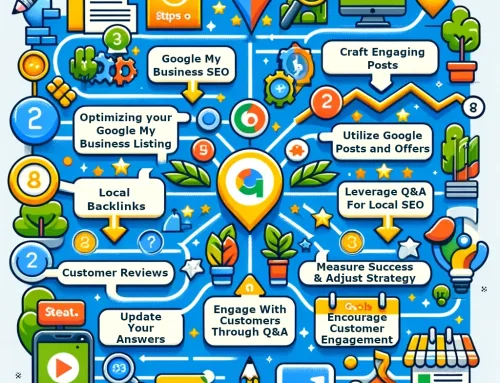 In the ever-evolving digital landscape, Google’s algorithm updates can feel like tidal waves crashing into your carefully constructed SEO strategies. Each update can significantly affect your website’s visibility and ranking.
In the ever-evolving digital landscape, Google’s algorithm updates can feel like tidal waves crashing into your carefully constructed SEO strategies. Each update can significantly affect your website’s visibility and ranking.
In fact, as of the writing of this article, we are in the midst of perhaps the biggest ever Google algorithm update which the company itself said could take a month to fully work through the various systems used to rank pages.
Rather than being swept away by these changes, it’s possible to ride the waves to even greater SEO success. This article provides a comprehensive guide to navigating and adjusting your SEO approach in response to Google’s algorithm updates.
If you are unsure how to complete these steps, or would like a second opinion on the SEO being done to your site please don’t hesitate to contact us.
Understanding Google’s Algorithm Updates
Google’s primary goal is to enhance the user experience by delivering the most relevant and high-quality content in response to search queries. To achieve this, Google regularly updates its search algorithms. These updates can range from minor adjustments that go unnoticed to major overhauls that shake up the search engine results pages (SERPs). Notable updates in the past have included Panda, Penguin, and the more recent BERT and Core Updates. As mentioned above, the March 2024 update will be added to this list of “notable updates”
Staying Informed: The First Step to Adaptation
- Follow Google’s Announcements: Google often provides information about significant updates. By following Google’s SearchLiaison X account, the Google Search Central Blog, and other SEO news websites, you can stay ahead of major changes.
- Use SEO Tools: Leverage SEO tools that monitor your site’s performance and search rankings. Tools like Google Analytics, Google Search Console, SEMrush, and Ahrefs can alert you to shifts in your website’s search engine rankings, which may indicate an algorithm update.
Analyzing the Impact
Once you’re aware of an update, assess its impact on your site. Review your website’s analytics to identify changes in traffic, rankings, and engagement. Look for patterns that might suggest which aspects of the update are affecting your site, such as specific keywords or types of content.
The following are steps you should take to thoroughly understand how an update affects your site and what actions to undertake in response.
Detailed Analysis of Algorithm Impact
- Benchmark Your Current Performance
Before you can accurately measure the impact of a Google algorithm update, establish clear benchmarks of your website’s performance. This includes metrics such as organic traffic, search engine rankings for your key keywords, click-through rates (CTR), and user engagement metrics like bounce rate and session duration. Having this data on hand before the update rolls out provides a baseline for comparison.
- Monitor Performance Fluctuations
After an update is announced or detected, closely monitor the same metrics for any signs of fluctuation. Use Google Analytics and Google Search Console to track changes in traffic and rankings. Pay particular attention to:
- Traffic Drops or Gains: Significant changes in organic traffic can indicate that your site’s visibility has been impacted by the update.
- Ranking Changes for Specific Keywords: Drops in rankings for previously high-performing keywords could suggest that the update targets specific content qualities or SEO practices.
- Segment Your Data for Deeper Insights
To understand the nuances of the update’s impact, segment your data. Look at performance by:
- Page Type: Compare how different sections of your site (e.g., blog posts, product pages) are affected.
- Device Usage: See if the update has a different impact on mobile versus desktop traffic, which could indicate a mobile usability factor.
- Geographical Location: Assess if the update has affected your site’s performance in specific regions differently.
- Compare with Industry Benchmarks
Your site’s performance changes might be part of a broader industry trend. Use tools like SEMrush or Ahrefs to benchmark your site’s performance against competitors and industry averages. This can help differentiate between changes caused by your specific site issues and those resulting from broader shifts in search behavior or industry standards.
- Analyze User Behavior
Beyond quantitative metrics, analyze qualitative data on user behavior. Use tools like heatmaps or session recordings to see if user interaction patterns have changed. This can provide clues on whether changes in content presentation or website structure might be necessary to align with user expectations post-update.
- Gather Community Feedback
SEO and webmaster forums, social media discussions, and industry blogs can offer valuable insights into the collective experience of the update’s impact. Community feedback can provide additional context or highlight specific aspects of the update that you might have overlooked.
Adapting Your SEO Strategy
Once you have completed your analysis you should be able to identify some trends for further investigation. Or perhaps you have identified the main issues with your site. In either case, these are some areas to look at improving your SEO for:
- Content Quality: Focus on creating high-quality, valuable content that meets the needs of your audience. Google’s algorithms increasingly prioritize content that demonstrates expertise, authority, and trustworthiness (E-A-T).
- User Experience (UX): Ensure your website offers a great user experience, including fast loading times, mobile-friendliness, and easy navigation. Google’s Page Experience update made these factors more critical than ever.
- Backlink Profile: Maintain a healthy backlink profile with high-quality, relevant links. Disavow toxic backlinks that could harm your site’s reputation and rankings.
- Technical SEO: Regularly audit your website for technical issues that could affect your SEO, such as broken links, duplicate content, and improper use of tags. Addressing these issues promptly can mitigate the impact of algorithm updates.
Continuous Learning and Flexibility
Remember that SEO is not a set-it-and-forget-it endeavour. It requires ongoing education and adaptability. Participate in SEO forums, attend webinars, and engage with the SEO community to share insights and strategies for dealing with algorithm changes.
Your SEO strategy and tactics need to evolve just as Google evolves by performing these regular algorithm updates.
Conclusion: Putting it All Together
Google’s algorithm updates are designed to improve the search experience for users, not to penalize websites arbitrarily. By focusing on creating a high-quality website that delivers value to users, you can ensure your SEO efforts are aligned with Google’s objectives. Remember, SEO is a marathon, not a sprint. Staying informed, analyzing the impact of updates, and being willing to adapt your strategies are key to navigating the waves of change and achieving long-term success in the SERPs.
Let’s Work Together
TELL US MORE ABOUT YOUR PROJECT
Let us help you get your website found. Or, if you simply have a few questions, then fill out the form below and we will get back to you.

